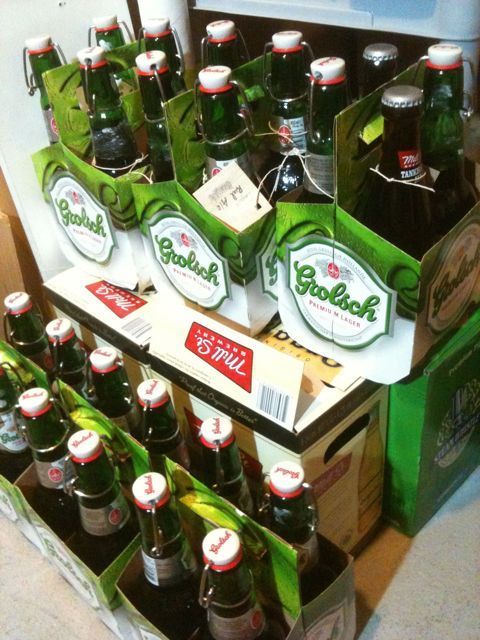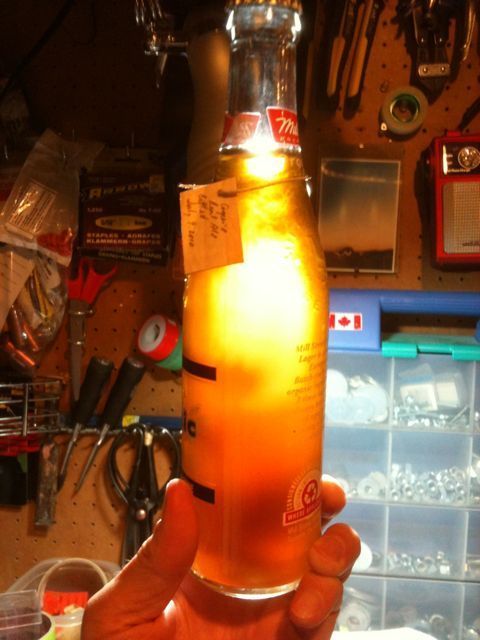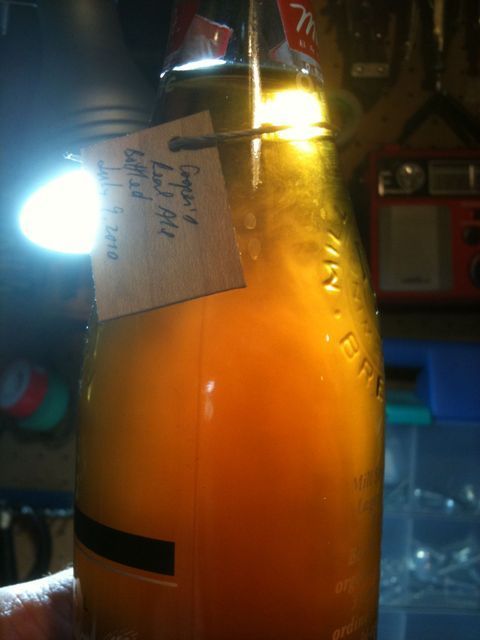Again, another great use of a vacation day. It started off pouring rain outside, a cathartic release to a week-long, oppressive heatwave. So, I was happy to spend some time in the basement transferring the brew from the primary fermenter into secondary fermentation in the bottles.
I cleaned and washed all the equipment with water and some bleach. I figure I used about a 40:1 water to bleach ratio — just enough so that I could smell it in the water, but not so strong as to be offensive and corrosive. Still, I wore rubber gloves while cleaning the bottles. I figured everything was clean and ready to use when I couldn’t smell any trace of chemical following a healthy rinse.
I have to say, I love those bottles with the fump tops. They’re so easy to clean and re-use. I’m glad I had some bottle caps left over from the previous kit because when I boiled the bottle caps I bought with this can the plastic separated from the metal and 95% of them were garbage. Feh. I’ll be more careful sanitizing them next time.
Maybe not so much boil in the water.
I really guessed on the sugar. Not such a good thing, perhaps, but I’ll just have to take my chances; I am happy to say that I think my chances are pretty good.
I think I put roughly 120 grams of corn sugar into 2 cups of boiling water. This was a technique that I learned with the Brewer’s Best instructions. The Cooper’s kit said to put sugar in the bottoms of the bottles — 8g for each 750mL bottle — but that seemed a bit risky since messing that part up ends in blown bottlecaps. Plus, I have no real way of measuring mass; I’m relying on eyeballs and my spidey senses.
If I can learn anything from the results of the first batch, where I added the measured package from the kit of 140g for what was supposed to be 5 gallons (approx. 18.9L), I think my measurement is correct. The first batch lost about 2 – 3 litres of wager volume in the brewing process that I failed to add back in as I bottled. Therefore, it’s not a surprise that the carbonation in the first batch is lively and active. There were a few excited splurty tops when the bottle caps came off the first batch, so reducing the priming sugar concentration to account for the water volume loss in the brewing process is about as scientific as I’m going to get. The rest is all up to my nose.
When I tried some of the brew I siphoned it was bitter and lively with a subtle depth of hops lingering on the palate. It lacked the sweet character that I hope will develop and bring out the bottom end of the beer. Providing, that is, I didn’t screw the sugaring up.
Despite the dark chestnut tones of the brew while it fermented in the glass carboy for the first 8 days by the time I’d siphoned it into the bottles, the colour was starting to come through.
I could clearly see the yeast suspension starting to separate within an hour of capping the bottles. This is encouraging.
Next time I’m going to do a double fermentation to try and de-cloud the end result. I’ve heard isenglass is also useful in removing the cloudiness.
With any luck this action should be ready to imbibe in 2 weeks.





